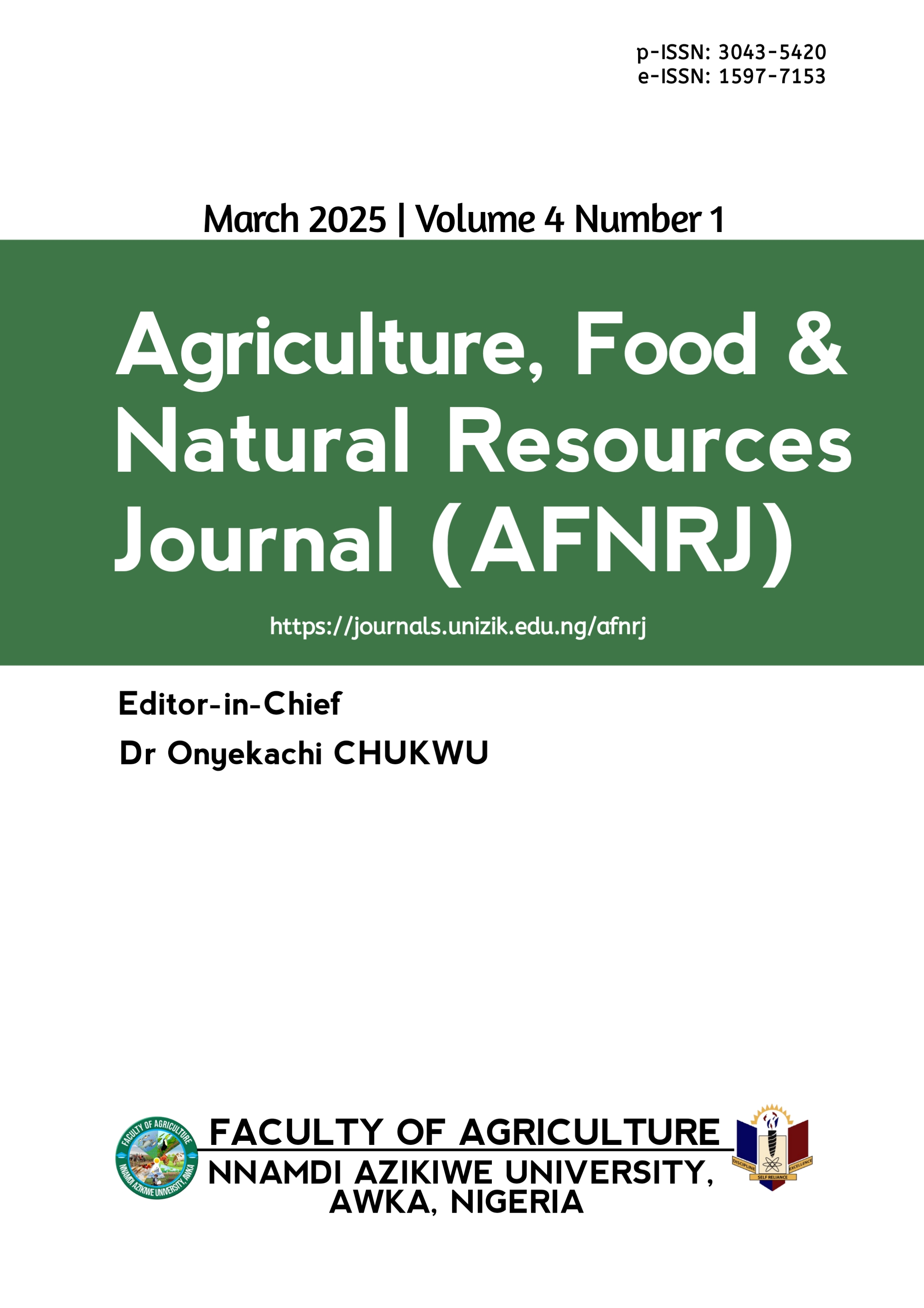Determinants of post-harvest losses of rice in north-east Nigeria
DOI:
https://doi.org/10.5281/zenodo.15113020Keywords:
Actors, Effect, Influence, Value-chainAbstract
Post-harvest losses, particularly along the rice value chain, have been identified as a source of food insecurity and reduction in income among the value chain actors. It is therefore necessary to determine the factors that influence post-harvest losses in the study area and also to assess the level of post-harvest losses so as to be able to provide a reliable policy stand that can help reduce these losses. Gombe, Taraba and Yobe States were purposively selected from the northeast in Nigeria because they are the major producers of rice in the zone. Data were collected through the use of a questionnaire from 107 farmers, 106 processors, and 106 traders. Descriptive statistics, correlation, and machine learning were used to analyze the data. The result revealed that loss was highest for farmers at 189.22 kg/ha of paddy rice (₦112,500.00 at ₦643.00/kg) (1 naira = $0.00066), processors (10.22 kg/bag at ₦1100/kg), and marketers (3.22 kg/bag at ₦1100/kg) of milled rice. The household size, educational level, and farm size significantly affected post-harvest losses for farmers, while experience and access to credit significantly affected post-harvest losses for processors, and only distance significantly influenced post-harvest losses for marketers. It was therefore recommended that the government should intensify efforts and investment in rural infrastructure facilities such as good roads, stable electricity, and storage facilities in addition to providing adequate training to the value chain actors.
Downloads
Published
Issue
Section
License

This work is licensed under a Creative Commons Attribution 4.0 International License.
which permits unrestricted use, distribution, and reproduction in any medium, provided the original author and source are credited.
Authors retain the copyright of their published work in the AFNRJ.





